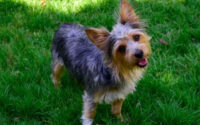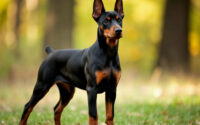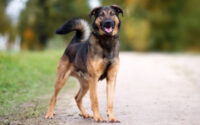What breeds make a boston terrier
In the pantheon of American dog breeds, the Boston Terrier holds a special place as a spunky, affectionate companion with a tuxedo-like coat that has earned it the nickname “The American Gentleman.” But just what canine cocktail resulted in the creation of this charming breed? Today, we delve into the genetic tapestry of the Boston Terrier, uncovering its origins and the two primary breeds that came together to create this unique dog — a mix of determination and love, wrapped in a petite, muscular frame.
Origins of the Boston Terrier
Table of Contents

The Boston Terrier’s roots can be traced back to 19th century America, specifically to the city after which it is named: Boston, Massachusetts. It was here, in the late 1800s, that the breed was first developed. The story begins with a dog named Judge, a cross between an English Bulldog and the now extinct English White Terrier, who was brought over from England. Judge is often cited as the patriarch of the breed, laying the foundation for what would become the Boston Terrier we know today.
Judge’s ownership passed from one Bostonian, William O’Brien, to another, Robert C. Hooper, whose association with the dog would embed his name forever in the breed’s lore — Judge was often referred to as Hooper’s Judge. The breed’s lineage sprouted from Hooper’s Judge and a female of similar mixed ancestry named Gyp or Kate. The Boston Terrier was originally bred for pit fighting, a dark vestige of canine history. Thankfully, the breed’s tenacity was soon channeled into more companionable pursuits.
Since those early days, the Boston Terrier has undergone significant changes. From a burly fighting dog, the breed has been refined to a smaller, friendly companion animal. In the early 20th century, the Boston Terrier became one of the first breeds created in America to be recognized by the American Kennel Club (AKC), gaining official recognition in 1893.
The breed’s standard, detailing its ideal physical and temperamental traits, was first drafted by the Boston Terrier Club of America in 1891 and has undergone updates to maintain the breed’s health and distinctive appearance. The Boston Terrier’s ascension in popularity was meteoric; by the 1920s, it had become one of America’s most popular dog breeds. The breed’s beginnings are a testament to the idea that even within the world of canine development, a diamond in the rough can be found and polished to perfection.
The Bulldog Ancestry Explained

The Boston Terrier’s bulldog ancestry is crucial to understanding its distinct appearance and temperament. Bulldogs, originally used for the brutal sport of bull-baiting in England, were prized for their courage, tenacity, and muscular build. These attributes are reflected in the Boston Terrier through its sturdy physique and bold demeanor.
- Physical Traits: The Boston Terrier inherits the Bulldog’s brachycephalic facial structure, giving it a short snout and a square jaw. This physical trait is accompanied by the breed’s characteristic round, expressive eyes and a stout, well-muscled body.
- Personality: From the Bulldog, the Boston also acquires a loyal and gentle disposition. Despite its origins in combat, today’s Bulldog is known for being affectionate and good-natured, which translates into the Boston Terrier’s personality.
- Size and Proportion: Bulldogs are medium-sized dogs, and this attribute has been scaled down in the Boston Terrier to meet the breed standard, which calls for a compact dog that is well-proportioned.
- Health Considerations: Boston Terriers, like Bulldogs, may have health issues related to their short faces, such as brachycephalic syndrome, which can cause breathing problems. Prospective owners should be aware of such hereditary health concerns.
- Strength and Stamina: While no longer bred for fighting, the Boston Terrier retains a semblance of the Bulldog’s strength and stamina, although it is now manifested in a playful, energetic companion rather than a combatant.
- Popularity: Both Bulldogs and Boston Terriers are beloved for their distinctive looks and friendly personalities, making them favorites among city dwellers and families alike.
The Terrier Contribution

While the Bulldog played a significant role in the creation of the Boston Terrier, the influence of terrier breeds cannot be understated. The now-extinct English White Terrier, among others, lent its genes to the mix, contributing to the Boston Terrier’s spirited and intelligent nature.
- Alertness and Energy: Terriers are known for their vivacious and alert personality. The Boston Terrier’s lively spirit and quick reflexes are traits inherited from its terrier ancestors.
- Size Considerations: Terriers are generally smaller than Bulldogs, which helped refine the Boston Terrier down to its current manageable size, fitting for both suburban and urban living environments.
- Coat and Color: The smooth, fine coat and distinctive color markings of the Boston Terrier can be traced back to its terrier lineage.
- Intelligence: Terriers are renowned for their sharp minds, and the Boston Terrier is no exception. This breed is known for its trainability and often excels in obedience and agility competitions.
- Sociability: While some terrier breeds can be somewhat aloof, the terrier influence on the Boston Terrier has resulted in a dog that is generally friendly and enjoys being around people.
- Adaptability: Terriers are adaptable dogs, capable of thriving in a variety of settings, and this trait has carried over to the Boston Terrier, which is equally at home in an apartment or sprawling estate.
Breeding the Perfect Companion

Over the years, the focus in breeding Boston Terriers has shifted significantly from the creation of a fighting dog to that of an ideal companion animal. The journey from the pits to the parlor required selective breeding to emphasize the breed’s friendlier, more sociable traits.
- Temperament: Through careful breeding, the aggressive tendencies once necessary for fighting have been minimized, leaving a gentle, affectionate dog that enjoys human companionship.
- Size: The breed standard for Boston Terriers calls for a small, compact dog, weighing no more than 25 pounds. Breeders have worked to maintain this size to fit the lifestyle of a companion dog.
- Health: Responsible breeders prioritize the health of their Boston Terriers, screening for genetic conditions and striving for a conformation that minimizes health risks associated with their brachycephalic faces.
- Appearance: The distinctive tuxedo-like markings of the Boston Terrier have been carefully preserved and are a hallmark of the breed, making it immediately recognizable.
- Behavior: Breeders have also focused on ensuring that Boston Terriers maintain a balanced and friendly disposition, making them excellent family pets.
- Longevity: By emphasizing health and proper care, breeders aim to ensure that Boston Terriers live long, happy lives as cherished members of the family.
Boston Terrier: A Mix of Two

When considering the Boston Terrier, it’s important to acknowledge that it is fundamentally a product of two different types of dogs – the Bulldog and the Terrier. This mix has resulted in a breed that embodies the best of both worlds.
- The Bulldog’s Influence: The Boston Terrier’s loyal, relaxed nature and distinctive appearance are traits inherited from its Bulldog ancestors.
- The Terrier’s Traits: Its intelligence, alertness, and smaller size are attributes that have been passed down from its Terrier lineage.
- The Perfect Blend: The combination of these breeds has created a dog that is not only physically appealing but also possesses a temperament well-suited for companionship and family life.
- Cultural Impact: The Boston Terrier’s mix of traits has cemented its place as an iconic American breed, reflective of the melting pot that is the United States.
- Modern-Day Companion: Today’s Boston Terrier continues to be a favorite choice for those seeking a small but sturdy dog with a big personality and a loving heart.
- Consistency in Breeding: The consistent blending of these two breeds over generations has established a stable and recognizable breed standard that is admired and upheld by Boston Terrier enthusiasts worldwide.
Evolution of the Boston’s Breed

The Boston Terrier of today is quite different from the original dogs bred in the late 19th century. Through selective breeding and a change in cultural attitudes towards dog fighting, the Boston Terrier has been transformed from a fighter to a lover.
- Early Development: Initially bred larger and more robust for the now-outlawed fighting pits, the Boston Terrier has been refined to a smaller size more suitable for a lapdog.
- Changing Standards: The breed standard has evolved to emphasize a friendly, approachable demeanor and a charming appearance.
- Public Perception: As the breed became a symbol of American ingenuity and a companion for families, its image in the public eye shifted from that of a pugnacious brawler to a refined gentleman.
- Popularity Fluctuations: While the Boston Terrier’s popularity has waxed and waned over the years, it has remained a beloved breed and a fixture in American culture.
- Future Prospects: With ongoing attention to health and temperament, the Boston Terrier is set to continue its legacy as a cherished pet.
- Breed Advocacy: Breed clubs and organizations are dedicated to preserving the history and integrity of the Boston Terrier, ensuring its unique lineage and characteristics are maintained for future generations.
Comparison Table: Bulldog vs. Terrier Influences on the Boston Terrier
| Trait | Bulldog Influence | Terrier Influence |
|---|---|---|
| Size | Medium, stocky build | Smaller, more refined size |
| Personality | Loyal, affectionate | Energetic, intelligent |



